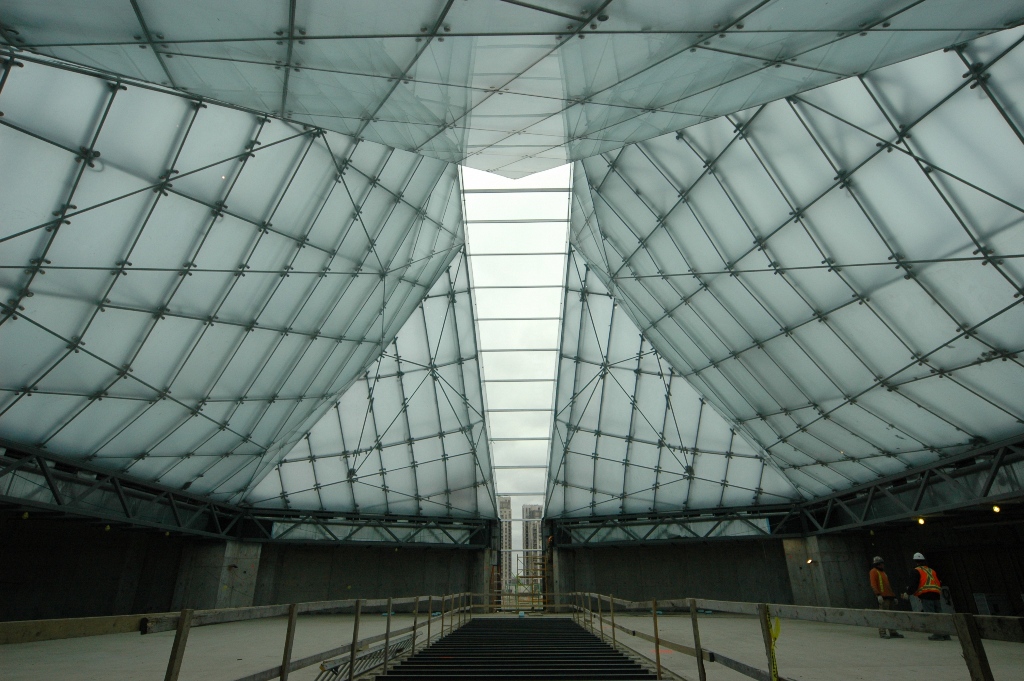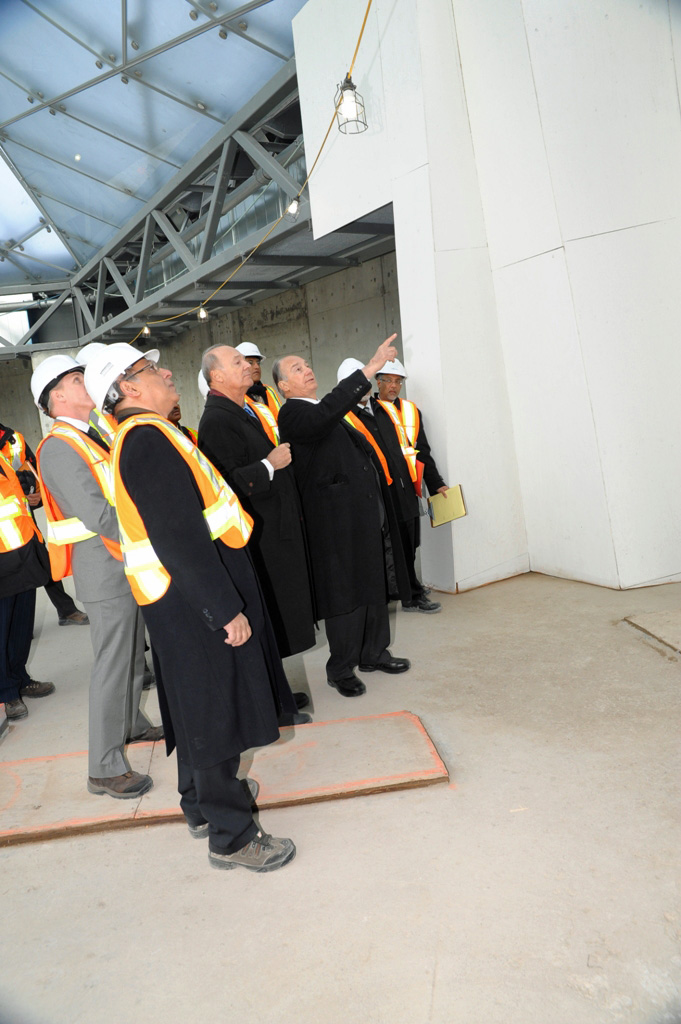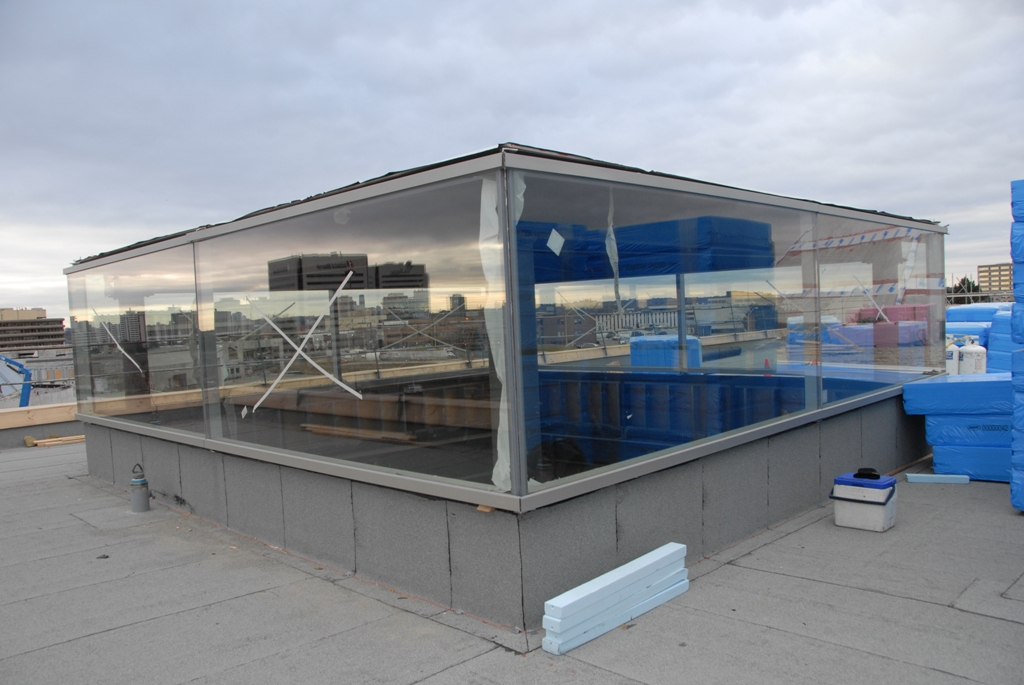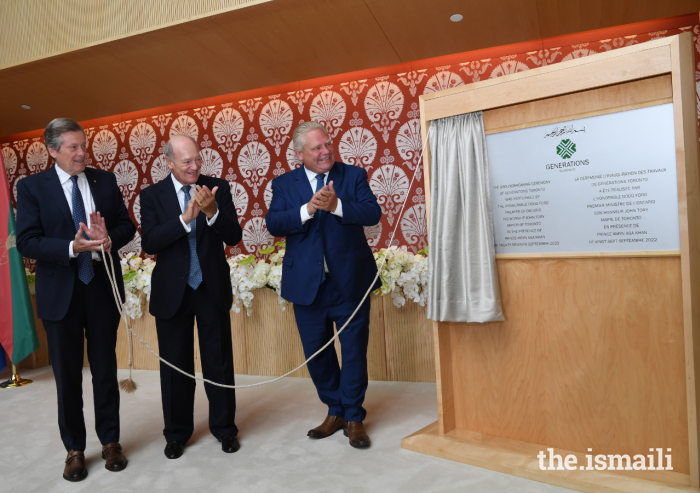 Interior view of the Jamatkhana prayer hall of the Ismaili Centre, Toronto, looking towards qibla. Imara Wynford Drive Ltd / Moez Visram
Interior view of the Jamatkhana prayer hall of the Ismaili Centre, Toronto, looking towards qibla. Imara Wynford Drive Ltd / Moez Visram“The Park will combine quiet spaces with lively ones, open areas with more defined shapes, formality with informality, the traditional with the contemporary…”
– Mawlana Hazar Imam at the Foundation Ceremony
of the Ismaili Centre, Toronto, the Aga Khan Museum
and their Park in May 2010
For many Torontonians, living in the city sometimes feels like moving through snapshots taken by a time-lapse camera set at hyper-speed. Fortunately, a park under construction in the Don Valley neighbourhood of Toronto will soon offer a new escape.
Mawlana Hazar Imam visits Wynford Drive projects
Mawlana Hazar Imam and Prince Amyn were at the Wynford Drive construction site to review construction progress and consider design details for the Aga Khan Museum and the Ismaili Centre.
Over the past year, construction of the Ismaili Centre, Toronto, the Aga Khan Museum and their Park on Wynford Drive has seen immense progress. Integral to their overall design, the Park will connect the Ismaili Centre and the Aga Khan Museum, offering a welcoming green space to visitors. Together, the projects will offer new opportunities for visitors to understand Muslim diversity, while creating platforms for dialog between communities and cultures.
“Why are parks important? I cannot imagine cities without parks,” said Lebanon-based landscape architect Vladimir Djurovic, at the May 2010 foundation ceremony. “They play a very important role because that's where you reconnect with nature.”
Djurovic, who was selected to design the Park after an international competition, was influenced by other green spaces from around the Muslim world, including many developed or rehabilitated by the Aga Khan Trust for Culture in places like Cairo, Kabul, Delhi and Zanzibar. Mawlana Hazar Imam had asked him to visit a number of these before the architect designed the Toronto Park.
“The gardens at Humayun's Tomb in India are one of my favourite gardens of all time,” said Djurovic. “Seeing a garden designed a very, very long time back – and which today is probably even more magical than when it was designed – was a huge inspiration.”
For Djurovic, this was the main challenge in designing the gardens. He sought to create a park that would capture the timeless elements found in gardens such as at Humayun's Tomb and the Alhambra in Granada, Spain, while adapting them to the contemporary Canadian context.
The symmetry and the geometry of the gardens, the sensations a visitor will get from walking on loose gravel, even the use of local plants, shrubs and trees, all seek to “capture the essence of the Islamic garden and translate it into an expression that reflects its context and contemporary age.”
The Park will incorporate a chahar-bagh formal garden with five reflecting pools, approximately 2 kilometres of walking trails, and components suited to seasonal changes throughout the year. The garden will depict the stark beauty of the Canadian winter as well as the colourful bloom of spring and summer. The Park is also designed to host educational programming and outdoor gatherings, such as concerts, while offering spaces for quiet reflection.
 Clearstory skylight over the multipurpose lounge of the Aga Khan Museum. Imara Wynford Drive Ltd / Moez Visram
Clearstory skylight over the multipurpose lounge of the Aga Khan Museum. Imara Wynford Drive Ltd / Moez VisramDjurovic sees the Park as a legacy “for all generations.” Even as time moves on, the fundamentals will remain “now and forever,” he said. “Hopefully, the Park will be seen both as a continuation in history, and a new interpretation of it.”
A park brings communities together; it is a place to interact, to play and to spend time with family and friends. The Park on Wynford Drive will reflect the plurality of both the Muslim world and of Canada itself. It will connect communities and their values, while promoting awareness and understanding of cultures and heritage that reflect the contemporary Canada of our time.
This article was adapted from a piece published in the December 2011 issue of The Ismaili Canada.








